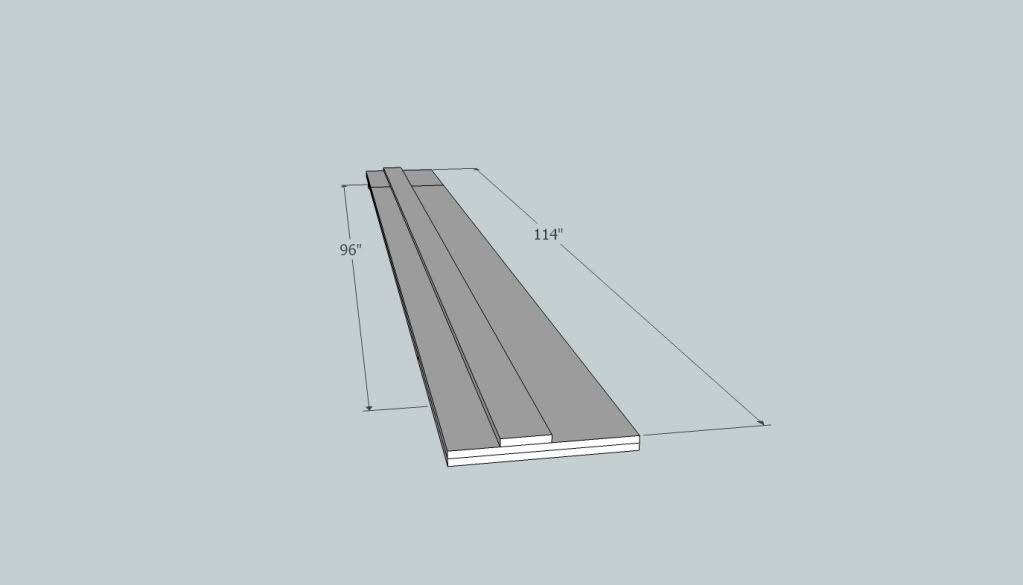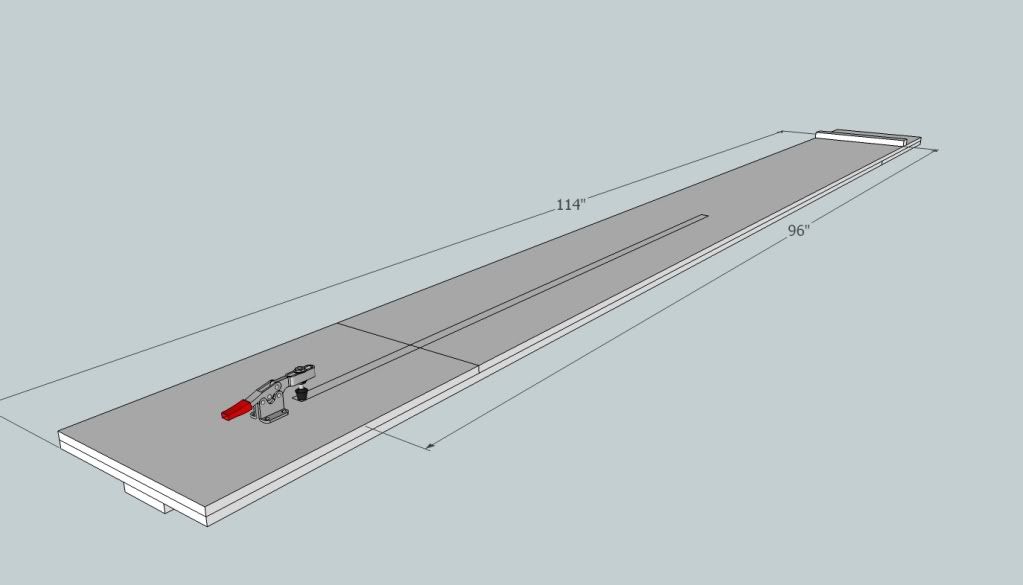As usual, I can make the simplest shop jig into a long drawn out thought process so I apologize in advance...
What do you think is the best material to use for the fence portion of a sawboard? I am looking at a 114" long sawboard for ripping plywood, the extra length is for starting the circular saw off of the plywood and allowing for underside clamping, I might be able to shrink this down to ~106". I am planning on using a t-track on the underside with a sliding toggle clamp and a fixed t-bar at the top to act as a squaring guide and clamping mechanism. There will be a smaller jig made for crosscutting as well.
I am leaning towards solid wood (1x3) only because on the long sawboard I can get a 10' length making a long straight? fence. I am worried about seasonal swelling and twist in the wood. I know the swelling is minimal across the grain, but wood always moves. I don't want to buy angle/channel or anything like that because of cost.
Would it be better to use plywood for the fence? How difficult would it be to align two pieces of plywood to make the full length necessary? Where should the long 8' section of fence go if done in plywood pieces? At the beginning of the cut or at the end? Wherever the piece goes is the error induced minimized by the edge of the shoe riding past it? Is this something best adjusted by handplane?
I have put thought into this, but I am not coming up with the solution, a combination of a migraine and playing outside in the sun too long with two children 4 and under who are tireless and helping me to type at the moment LOL Someone help me out with this rather simple task ;-)
Someone help me out with this rather simple task ;-)
What do you think is the best material to use for the fence portion of a sawboard? I am looking at a 114" long sawboard for ripping plywood, the extra length is for starting the circular saw off of the plywood and allowing for underside clamping, I might be able to shrink this down to ~106". I am planning on using a t-track on the underside with a sliding toggle clamp and a fixed t-bar at the top to act as a squaring guide and clamping mechanism. There will be a smaller jig made for crosscutting as well.
I am leaning towards solid wood (1x3) only because on the long sawboard I can get a 10' length making a long straight? fence. I am worried about seasonal swelling and twist in the wood. I know the swelling is minimal across the grain, but wood always moves. I don't want to buy angle/channel or anything like that because of cost.
Would it be better to use plywood for the fence? How difficult would it be to align two pieces of plywood to make the full length necessary? Where should the long 8' section of fence go if done in plywood pieces? At the beginning of the cut or at the end? Wherever the piece goes is the error induced minimized by the edge of the shoe riding past it? Is this something best adjusted by handplane?
I have put thought into this, but I am not coming up with the solution, a combination of a migraine and playing outside in the sun too long with two children 4 and under who are tireless and helping me to type at the moment LOL
 Someone help me out with this rather simple task ;-)
Someone help me out with this rather simple task ;-)


 Loring in Katy, TX USA
Loring in Katy, TX USA

 smacks head
smacks head 
Comment